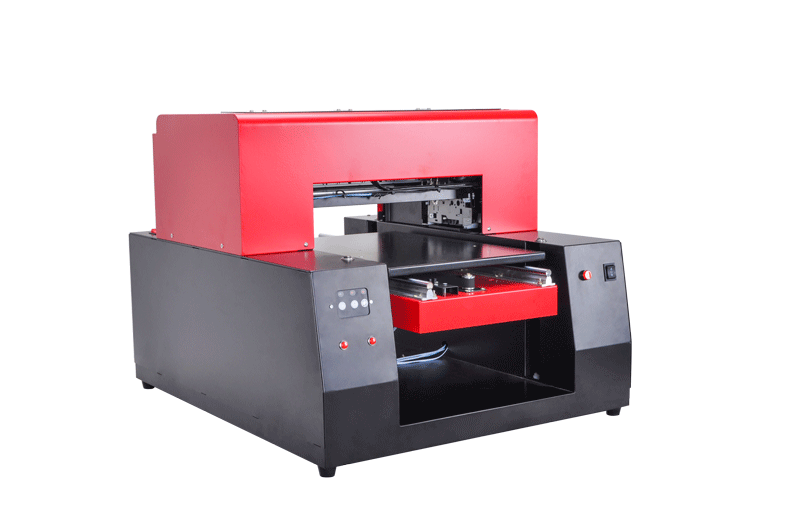Key points to ensure the printing quality of book and bar code
1. Improper color matching Barcode reading is based on the different reflectivity of light irradiating the bar and the space. The light source of the bar code scanning equipment is mostly red light. Therefore, the white and black bar code is the easiest to read. In order to reduce printing costs, some books and periodicals only print one color on the cover: red, yellow, or orange, so that the barcode is also printed as a red stripe on a white background, a yellow stripe on a white background, and an orange strip on a white background, which makes the scanning device glow red. The reflectivity irradiated on the bar and the space is almost the same, making it impossible to read; some book cover designers do not understand the principle of bar code reading, printing black bar codes on dark blue, dark green, dark brown covers or printing bar codes on Where there are pictures on the cover, the printing contrast (pcs value) of the barcode is very small, making it impossible for the scanner to read it. In this case, as long as the background color of the bar code printed on the cover is hollowed out into a blank white color, and then printed with a black bar code, the bar code can be read. In order to ensure the printing quality of the bar code, the color of the bar should be black, dark blue, dark green, brown, and the empty color should be white, red, yellow, orange. These 16 kinds of collocations are the best choice. To understand the attraction and reflection of light, the color of the bar must be able to absorb red light, so that the bar's reflectivity is low; the empty color must reflect red light, so that the empty reflectivity is high. The maximum value of the bar reflectivity does not exceed 25%, the minimum value of the empty reflectivity is not less than 96%, the bar code printing contrast (pcs value) is 67% -98%, and the bar code scanning instrument can read it correctly. 2. Scaling the barcode size arbitrarily For some books and periodicals, because the format is small (64 pages) or there are too many pictures on the cover, there is not enough space to place the bar code, so the size of the bar code will be reduced at will, resulting in the space being too small or the bar too thin, making the scanner unreadable. Therefore, when it is necessary to reduce the bar code, the book bar code administrative department must use special equipment to make the reduction code, and it can only be reduced to 80% of the conventional bar code. [next] 3. Make your own bar code film For some books and periodicals, the barcodes are lost, so you can make a bar code yourself or copy the barcode from the original book and then take it to make a plate. This method is not allowed. The quality of the self-made bar code film or the copied bar code itself is unqualified, so the books and periodicals bar coded and printed must be unqualified. If the bar code film is lost, you must apply to the book and bar code administration department for making a bar code film again. 4. Improper selection of printed paper, ink and equipment The bar and space of the bar code are very small, and the printing paper, ink, and equipment are not properly selected. It is easy to paste the plate, the bar becomes thicker, and the bar becomes thinner when printing. When the bar width deviation exceeds ± 30%, the scanner cannot read it. Therefore, it is better to choose offset printing for bar code printing of books and periodicals, and choose paper with less paper wool such as coated paper and offset paper. The roller pad should not be too soft during printing, and the fluidity of the ink is moderate to ensure that it does not paste. When printing bar codes, it is necessary to ensure that the bar is clear, the size is accurate, the bar width deviation and the printing contrast are within the prescribed range, so as to become a qualified product for book and bar code printing. The application of bar code scanning technology to realize the automatic management of computers is the current trend and hotspot of the international book industry in pursuit of management modernization. With the increasing number of "scanning bookstores" in China, the pass rate of the quality of book and bar code printing will affect the process of implementing computer management in China's publishing industry. Cover design, production staff and printing plant management personnel of various publishing units are familiar with and master the principle of barcode reading and quality assurance. Book barcode technology as a new thing will rely on the joint efforts of the publishing colleagues to get healthy and rapid development of.
UV Flatbed Printer a3 is suitable for printing various plastic materials.(such as ABS,PC,PE,PP,PU,PVC,etc),acrylic,metal sheet,wooden board,Plexiglass,crystal,copper paper,tile,billboard,leather.
More detail:
1. The height-detecting sensor adopts precise optical fiber technology, easy operation & simple production.
2. Directly print on phone cases, powerbanl,ball pens, golf balls, key chains, acrylic,crystal, glass, wood
3. Size breakthrough, mini size flatbed printer with uncoating ink, low operation cost, best choice to start a
UV Flatbed Printer UV Flatbed Printer,A3 UV Flatbed Printer,Desktop UV Flatbed Printer,Long Run UV Flatbed Printer,A2 UV Flatbed Printer,A4 UV Flatbed Printer Shenzhen Refinecolor Technology Co., LTD. , https://www.rfcprinter.com
board, aluminium, metal nameplate, leather, Plastic of PVC, PP, PE, PU and so on.
new business or customized print jobs.

Name
UV flatbed printer
Print head
DX5
Printer size
33*43cm(33*60cm)
Printing speed
A4 photo/111s
Printng resolution
5760*1440dpi
Nozzles
90*6=540
Interface
USB2.0
Net weight/Gross weight
55Kg/60Kg
Printer size
750*630*510mm
Height adjustment
Automatic
Working power
110V/220V 50/60Hz 30-75W
Operation system
Windows 7/XP/2000/Vista etc
Temperature
5-35o